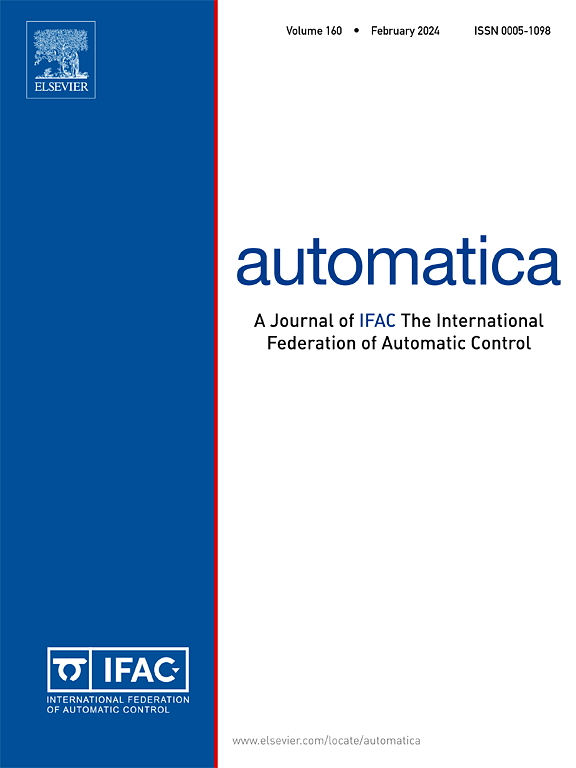Decentralised adaptive-gain control for eliminating epidemic spreading on networks
IF 4.8
2区 计算机科学
Q1 AUTOMATION & CONTROL SYSTEMS
引用次数: 0
Abstract
This paper considers the classical Susceptible–Infected–Susceptible (SIS) network epidemic model, which describes a disease spreading through nodes, with the network links governing the possible transmission pathways of the disease between nodes. We consider feedback control to eliminate the disease, focusing especially on scenarios where the disease would otherwise persist in an uncontrolled network. We propose a family of decentralised adaptive-gain control algorithms, in which each node has a control gain that adaptively evolves according to a differential equation, independent of the gains of other nodes. The adaptive gain is applied multiplicatively to either decrease the infection rate or increase the recovery rate. To begin, we assume all nodes are controlled with adaptive gains, and prove that both infection rate control and recovery rate control algorithms eliminate the disease with positive finite limiting gains. Then, we consider the possibility of controlling a subset of the nodes, for both the infection rate control and recovery rate control. We first identify a necessary and sufficient condition for the existence of a subset of nodes, which if controlled would result in the elimination of the disease. For a given network, there may exist several such viable subsets, and we propose an iterative algorithm to identify such a subset. Simulations demonstrate the effectiveness of the proposed controllers.
求助全文
约1分钟内获得全文
求助全文
来源期刊

Automatica
工程技术-工程:电子与电气
CiteScore
10.70
自引率
7.80%
发文量
617
审稿时长
5 months
期刊介绍:
Automatica is a leading archival publication in the field of systems and control. The field encompasses today a broad set of areas and topics, and is thriving not only within itself but also in terms of its impact on other fields, such as communications, computers, biology, energy and economics. Since its inception in 1963, Automatica has kept abreast with the evolution of the field over the years, and has emerged as a leading publication driving the trends in the field.
After being founded in 1963, Automatica became a journal of the International Federation of Automatic Control (IFAC) in 1969. It features a characteristic blend of theoretical and applied papers of archival, lasting value, reporting cutting edge research results by authors across the globe. It features articles in distinct categories, including regular, brief and survey papers, technical communiqués, correspondence items, as well as reviews on published books of interest to the readership. It occasionally publishes special issues on emerging new topics or established mature topics of interest to a broad audience.
Automatica solicits original high-quality contributions in all the categories listed above, and in all areas of systems and control interpreted in a broad sense and evolving constantly. They may be submitted directly to a subject editor or to the Editor-in-Chief if not sure about the subject area. Editorial procedures in place assure careful, fair, and prompt handling of all submitted articles. Accepted papers appear in the journal in the shortest time feasible given production time constraints.
 求助内容:
求助内容: 应助结果提醒方式:
应助结果提醒方式:


